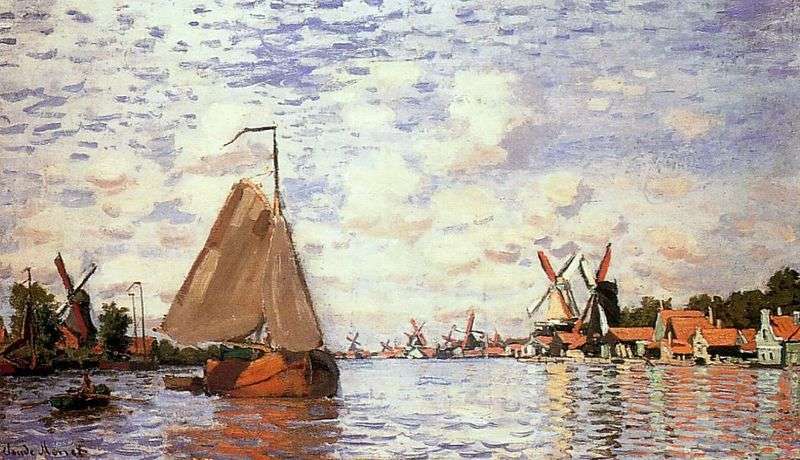
Claude Monet wrote a lot and each time his work became the biographical imprints of his many journeys, crossings and open-airs on the coast of the rivers of the Seine, then Zana, then their tributaries.
The painting “View of Zaandam” was painted before the artist moved to Arzhantey in 1871. Monet caught that part of Zaandam – the province of Holland – which reflects the originality of this quiet place. And at the head of the sights of the town were, and remain, to this day the mill. Mills paid special attention to the guests of Zandan, among whom was Peter I himself, mastering the science of shipbuilding in the Netherlands. So, Monet chose as a plot a piece of the “mill” bank of the river, along which slow boats and sailboats scurry about.
The warm color of the picture I want to consider the evening. Then the sun’s rays paint the clouds in purple, which is showered on objects in pink undertones. Monet bleached the horizon, and therefore the river seems to be infinitely long. The author prescribed water with rare brush strokes. Heaven presented more pounded spots of paint, dry and translucent. Textured letter revived plants and buildings along the perimeter of the coast. The sharp roofs of the houses, like a flock of red foxes, clustered along the mirror-like water. Their reflections stretched out into even pillars, blurred and even.
There is a lot of space, air, light. The region, in truth, is beautiful, quiet and such “not ours”. The work reflects the unusualness of Zandana. Here the peculiar architecture of the town and the abundance of vegetation are emphasized. Immediately you realize that this is a provincial land – an echo of something more important, larger, meaningful.
It should be noted that Claude Monet wrote a lot of landscapes related to the subject of reservoirs, regattas, sailboats and the coast. Despite the fact that water – the element, in general, the same – liquid, flowing, transparent – in the hands of the artist, it turned into something more and many-sided. As if Monet had endowed her with the fourth state – flat and oily, while alive and so inviting.
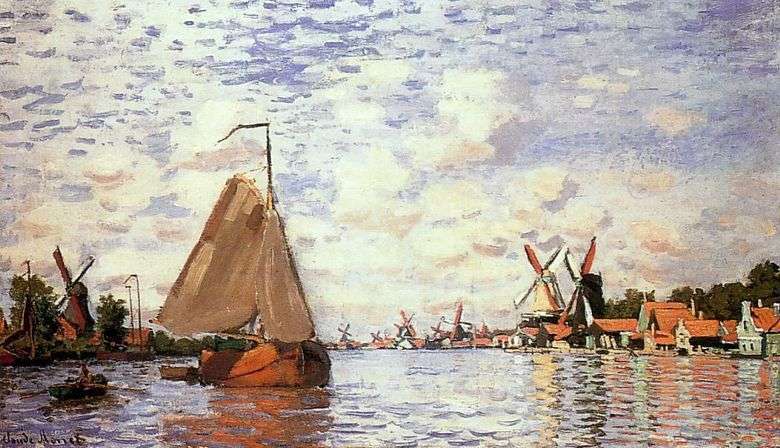 Vista de Zaandam – Claude Monet
Vista de Zaandam – Claude Monet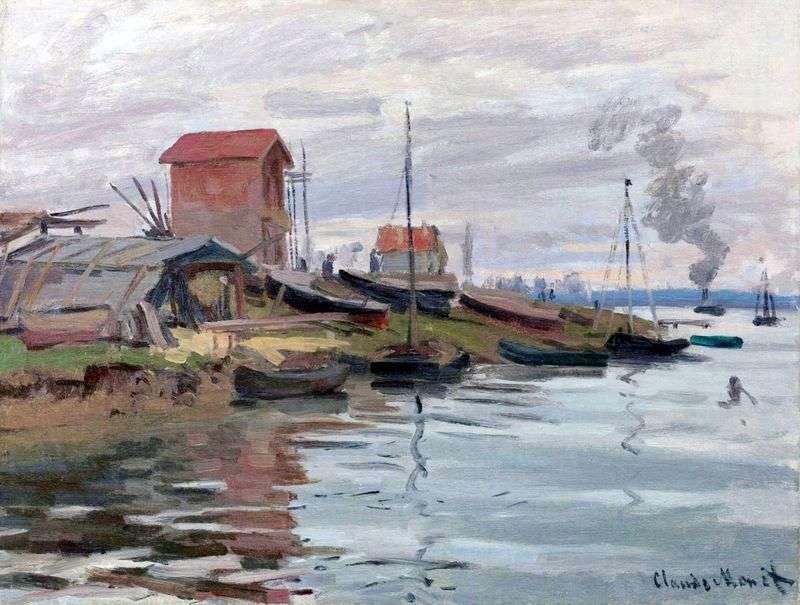 Seine, Petit Genevilliers by Claude Monet
Seine, Petit Genevilliers by Claude Monet Regatta in Argenteuil by Claude Monet
Regatta in Argenteuil by Claude Monet Studio Boat by Claude Monet
Studio Boat by Claude Monet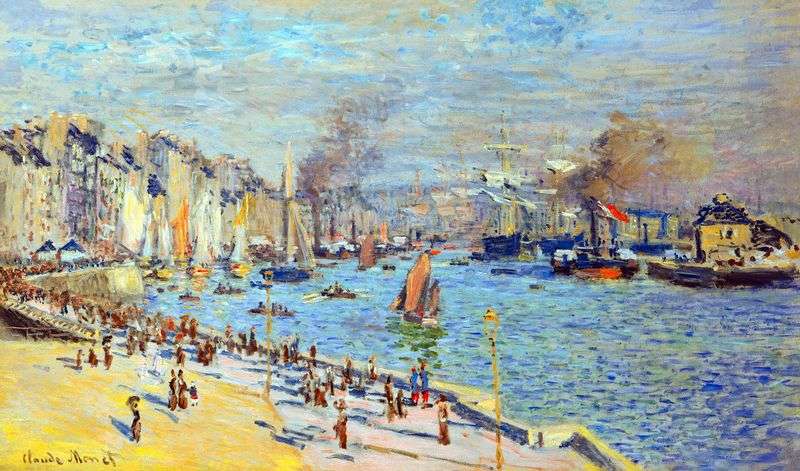 View of the Old Harbor in Le Havre by Claude Monet
View of the Old Harbor in Le Havre by Claude Monet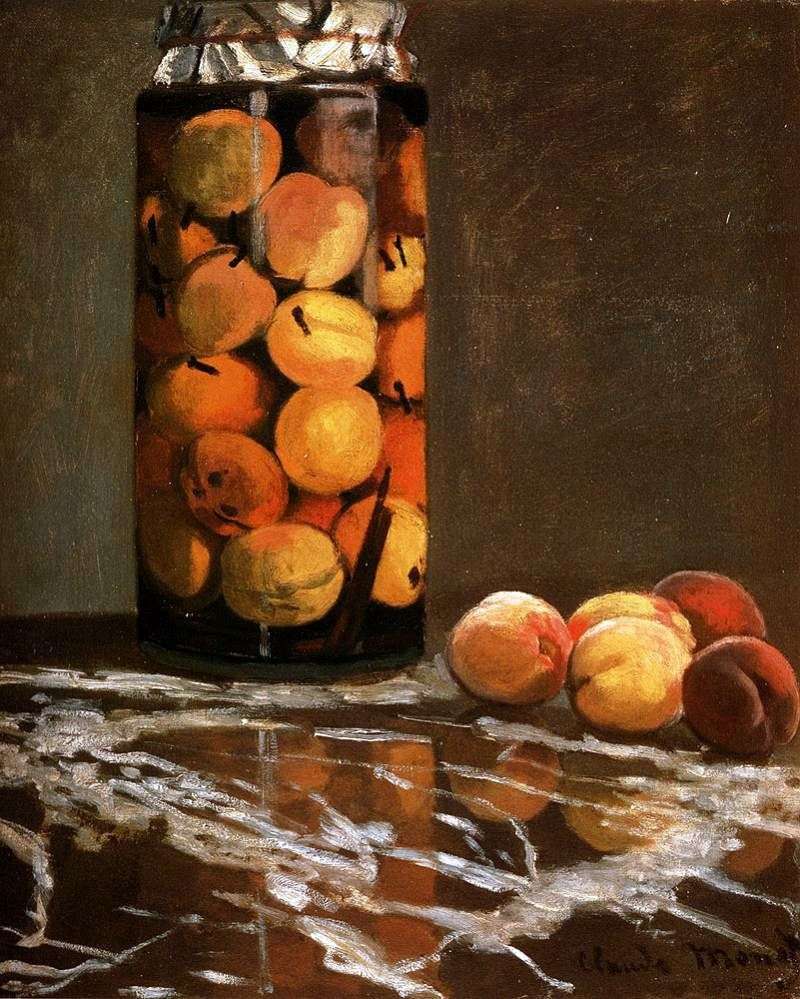 Peach Can by Claude Monet
Peach Can by Claude Monet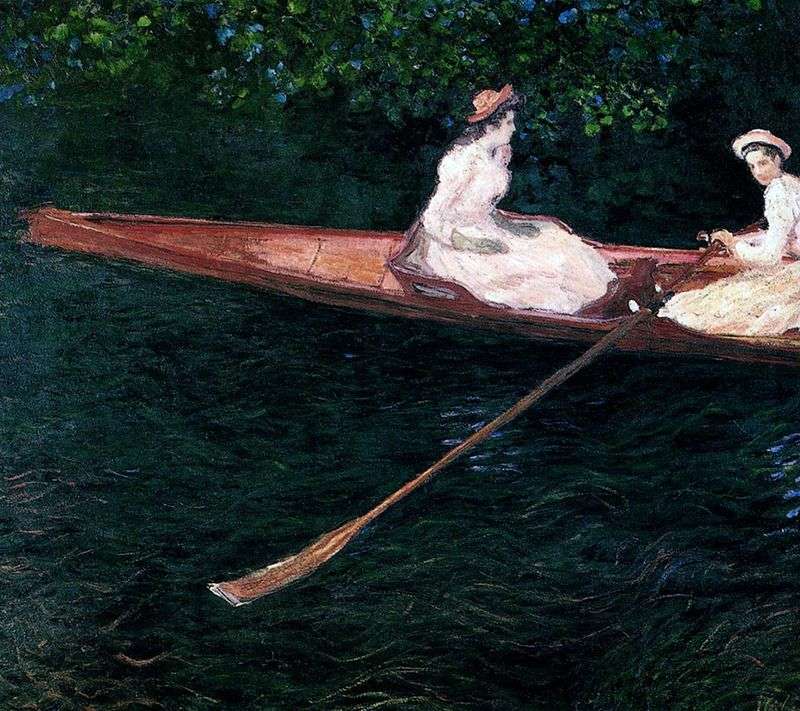 Girls sailing in a boat on the river Ept by Claude Monet
Girls sailing in a boat on the river Ept by Claude Monet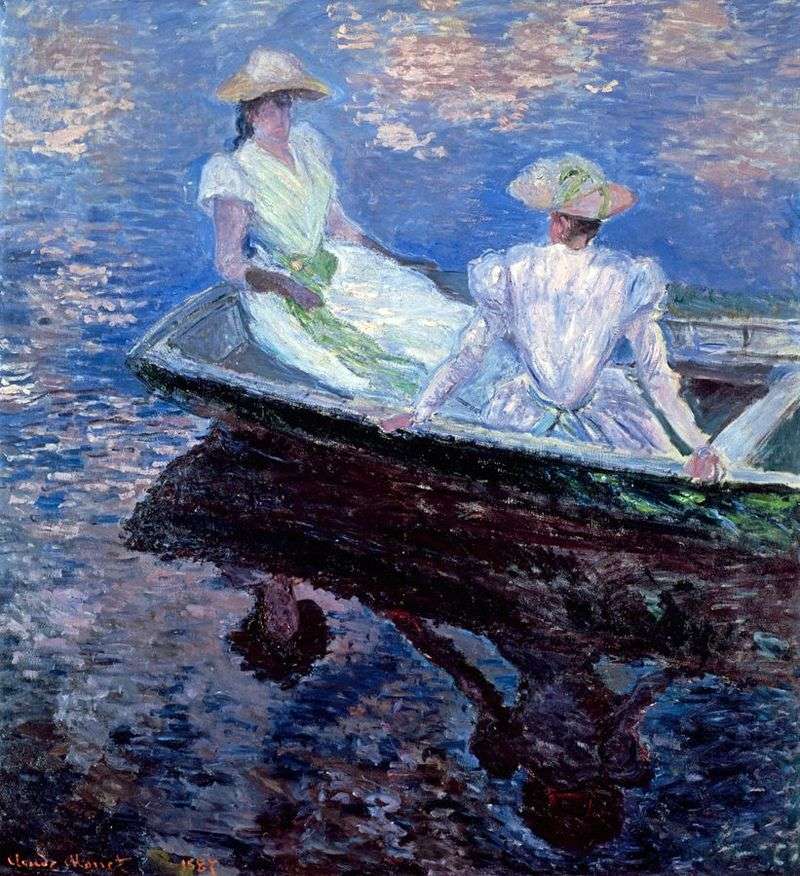 Girls in a Blue Boat by Claude Monet
Girls in a Blue Boat by Claude Monet